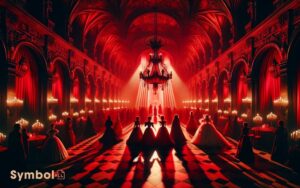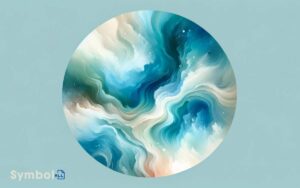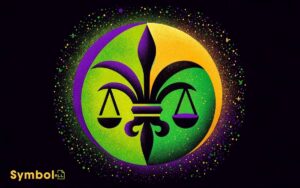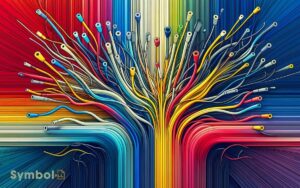What Does the Color Violet Symbolize? Wealth & Power!
Purple symbolizes a blend of wealth, power, and spiritual depth, setting it apart in both nature and culture. Its rarity imbues it with a mystical aura, signifying a connection to the divine and cosmos.
Historically tied to nobility, purple conveys authority, creativity, and mourning, depending on the context. It’s linked to the Crown Chakra, suggesting high consciousness and spiritual wisdom.
In fashion, it expresses sophistication and mystery, while in technology, it represents innovation.
Purple’s rich symbolism suggests an exploration into uncharted territories of the self and society. Revealing its layers, you’ll discover a world of meaning that transcends the visible.
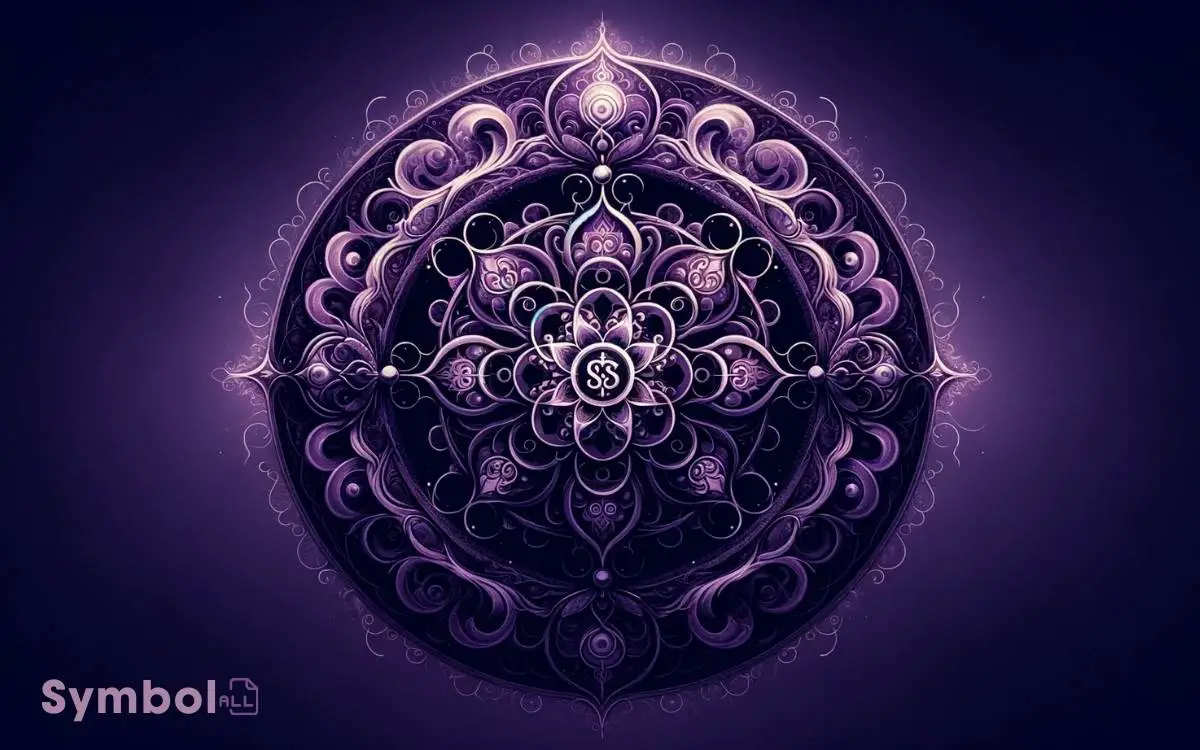
Key Takeaway
Historical Significance
Throughout history, the color violet has symbolized wealth, power, and spiritual depth, profoundly influencing societal and cultural norms.
Its rarity in nature, seen only in select flora and the occasional twilight sky, has bestowed it with a mystical aura, elevating its status in various civilizations.
You’ll find that ancient texts and artifacts often depict violet as a color reserved for significant occasions and esteemed figures, signifying a deep connection to the divine and the cosmos.
This reverence transcends mere aesthetic appeal, embedding itself into the fabric of cultural rites and rituals.
Its presence in art and architecture wasn’t merely decorative but served as a marker of philosophical ideals and a conduit for spiritual introspection.
Analyzing its historical significance, you uncover layers of meaning that underscore its enduring appeal and complex symbolism.
Royal Connotations
You’ll find that violet’s association with royalty isn’t merely a matter of aesthetics but is deeply rooted in history and tradition.
This connection is evident in the historical use of royal purple, its continued relevance in modern royal symbolism, and the inclusion of violet in ceremonial garb.
Each of these points underscores the color’s enduring prestige and its symbolic resonance within the context of power and nobility.
History of Royal Purple
In exploring the rich tapestry of history, it becomes evident that the color violet, often referred to as royal purple, has been a symbol of power, wealth, and prestige among the world’s ancient monarchies and aristocracies.
This distinctive hue, derived from the costly and labor-intensive process of extracting dye from the murex sea snail, was once so expensive that only the elite could afford it.
Its rarity and the luminous quality of the color itself made it a symbol of divinity and sovereignty, reinforcing the social hierarchy.
Ancient civilizations, such as the Phoenicians, Greeks, and Romans, reserved violet garments for their royals and high-ranking officials, embedding the color deeply within the cultural constructs of power and ruling authority.
Modern Royal Associations
Even today, the color violet maintains its regal associations, symbolizing luxury and exclusivity in modern monarchies and high society.
This enduring connection isn’t merely a remnant of its historical scarcity and costliness; it actively reinforces the mystique and sovereignty of contemporary royal families.
You’ll find that violet is subtly integrated into various elements of royal branding and public imagery, from emblems and crests to the sophisticated accents in palace decor.
Its use in these contexts isn’t arbitrary. Instead, it’s a deliberate nod to a rich lineage of power and prestige.
This color’s ability to evoke a sense of dignity and grandeur makes it an invaluable tool in the visual vocabulary of today’s monarchies, bridging the gap between their storied pasts and their public personas in the present.
Violet in Ceremonial Garb
Why does the color violet hold such a prominent place in the tapestry of royal ceremonial attire, transcending mere aesthetic appeal to symbolize deeper cultural and historical significances?
Historically, violet was a color of power, wealth, and deep spirituality, often reserved for the elite due to the rarity and expense of its dye. In royal contexts, it signifies not just sovereignty but the sacred duty and divine right to rule.
This color’s use in ceremonial garb isn’t arbitrary; it’s a deliberate choice that communicates authority, nobility, and a connection to the celestial.
It’s a visual cue to the populace of a ruler’s esteemed position and their role as a mediator between the divine and the mundane. Violet, hence, isn’t just a color; it’s a symbol of the weight of monarchy itself.
Spiritual Meanings
Throughout history, violet has symbolized deep spiritual wisdom and enlightenment, offering insights into the hidden domains of the universe.
You’re drawn into a kingdom where this color transcends the mere physical, touching the very essence of being.
| Aspect | Symbolism |
|---|---|
| Aura | Represents a highly spiritual mind, capable of intuition and insight beyond the physical kingdom. |
| Chakras | Linked to the Crown Chakra, symbolizing a connection to higher consciousness and spiritual awakening. |
| Dreams | Signals spiritual growth, guidance, or a calling to elevate one’s spiritual path. |
Violet’s rich hues invite you to explore beyond the tangible, guiding you towards a journey of self-discovery and cosmic exploration.
It’s a beacon for those seeking to understand the mysteries that lie beyond our physical senses, encouraging a deeper, more profound connection with the spiritual world.
Psychological Effects
You’ll find that violet’s influence extends beyond the spiritual, greatly impacting your emotional state and creative capacities. Its unique hue can elevate moods, fostering a sense of serenity and openness to inspiration.
Consequently, violet doesn’t just enchant the eye; it enriches the mind, nurturing innovation and emotional well-being.
Emotional Influence
Violet hues often evoke deep emotional responses, subtly influencing your mood and perceptions.
This color’s impact on your psyche might be more profound than you realize, shaping reactions and feelings in a nuanced manner.
| Emotion | Effect | Duration |
|---|---|---|
| Calmness | Soothes | Short-term |
| Mystery | Intrigues | Variable |
| Sadness | Deepens | Long-term |
| Spirituality | Elevates | Sustained |
| Nostalgia | Invokes | Medium-term |
Analyzing these emotional influences, it’s clear violet operates on a multifaceted psychological level. Its capacity to soothe or deepen sadness, for instance, showcases its dual nature.
Understanding these subtleties allows you to appreciate violet’s complexity and its unique place in the emotional spectrum, offering insight into its profound psychological effects without veering into its ability to inspire creativity.
Creativity Boost
Exploring the emotional landscape painted by violet’s hues, it’s remarkable how this color also promotes an environment ripe for creative exploration.
Delving into the psychological effects, violet’s presence in your surroundings can reveal a treasure trove of imaginative potential. It’s not simply an aesthetic choice; violet stimulates your mind, encouraging it to roam beyond the ordinary.
Studies suggest that this color can boost creative thinking, making it a powerful ally for artists, writers, and anyone seeking innovative solutions.
By embracing violet, you’re not just adding a splash of color; you’re welcoming a surge of creativity into your life.
It’s a demonstration of how our environment influences our mental processes, with violet acting as a catalyst for breaking free from conventional thinking patterns.
Cultural Interpretations
Across various cultures, the color violet holds diverse symbolic meanings that reflect historical, spiritual, and social nuances.
In Western societies, violet often symbolizes nobility and luxury, stemming from its rare appearance in nature and costly dye production processes in ancient times.
Contrastingly, in Eastern traditions, violet is deeply intertwined with spirituality and enlightenment, frequently associated with the crown chakra in Hinduism, which represents higher consciousness and spiritual connection.
Additionally, some cultures regard violet as a color of mourning and sorrow, a stark difference from its royal and spiritual connotations elsewhere.
This multifaceted symbolism underscores the complexity and depth of cultural interpretations of color, highlighting how societal values and historical contexts shape our perceptions and meanings attributed to hues like violet.
Creativity and Imagination
As you delve into the symbolism of the color violet, it’s vital to acknowledge its profound impact on creativity and imagination.
This hue has the unique ability to ignite artistic expression, fostering an environment where ideas flourish and innovative thinking is enhanced.
Additionally, violet serves as a wellspring of imaginative inspiration, inviting artists and thinkers alike to explore new domains of possibility.
Sparking Artistic Expression
In the domain of artistic expression, the color violet serves as a catalyst for creativity and imagination, inviting artists to explore the depths of their inner worlds.
This vibrant hue, often associated with the mysterious and the divine, prompts a journey beyond the conventional, urging creators to investigate into territories uncharted.
Violet’s presence in a palette isn’t merely a choice of color; it’s an invocation of introspection and a challenge to traditional perceptions.
Artists harnessing violet navigate through layers of symbolism and emotion, embedding these nuances into their work.
This exploration isn’t just about aesthetic appeal but a deeper conversation with the viewer, where violet becomes a bridge between the seen and the unseen, the known and the unknown.
Enhancing Creative Thinking
Building on the foundation laid by violet’s role in sparking artistic expression, it’s evident that this color also plays a pivotal role in enhancing creative thinking, fostering an environment where creativity and imagination flourish.
The depth and complexity of violet encourage divergent thinking, a key component in creative problem-solving.
This color’s unique position on the color spectrum, straddling the warm and cool divides, symbolizes the balance between emotional intuition and rational thought, a balance essential for innovative thinking.
Additionally, violet’s association with the surreal and mystical aspects of life suggests a connection to deeper levels of consciousness, potentially revealing new territories of creative thought.
Therefore, violet not only inspires but also deepens the creative process, making it a powerful tool for anyone seeking to expand their imaginative capabilities.
Imaginative Inspiration Sources
Exploring the myriad sources of imaginative inspiration, violet emerges as a profound catalyst in the domain of creativity and imagination, offering a bridge to uncharted territories of thought and expression.
This color, often associated with the mystical and the spiritual, acts as a muse, igniting the spark of creativity residing within you. It encourages you to investigate beyond the obvious, pushing the boundaries of your imagination.
As you delve into the depths of violet’s influence, you’ll find it’s not just a color but a symbol of the unconventional. It challenges you to explore the unknown, inspiring innovative ideas and solutions.
Essentially, violet serves as a beacon, guiding you through the fog of the mundane, towards the luminance of originality and invention.
Fashion and Expression
Violet’s unique hue serves as a powerful tool in fashion, allowing individuals to express intricate aspects of their identity and emotions with finesse.
This color, straddling the line between the calming blue and fiery red, offers a rich palette for self-expression.
In the world of fashion, violet conveys a sense of sophistication and mystery, often associated with creativity, luxury, and individualism.
When you choose to wear violet, you’re not just selecting a color; you’re making a statement about your personality and your mood. It’s a choice that speaks to a desire for uniqueness and a break from the conventional.
In this way, violet in fashion isn’t just about aesthetics; it’s an insightful reflection of personal identity and emotional landscape.
Mourning and Remembrance
In the domain of mourning and remembrance, the color violet carries a profound symbolism, bridging the gap between sorrow and hope with its deep hues.
Traditionally, violet has been associated with mourning, serving as a visual expression of grief and respect for the departed.
This color’s rich depth embodies the complex emotions experienced during periods of loss, encapsulating both the sadness of absence and the solace of memory.
Its use in memorial contexts underscores a collective acknowledgment of bereavement, while also offering a subtle reminder of enduring love and the continuity of life beyond physical existence.
Through its nuanced symbolism, violet facilitates a space for reflection and healing, encapsulating the duality of human emotions in the face of mortality.
Nature and Healing
Reflecting on the multifaceted symbolism of violet in mourning and remembrance, it’s also crucial to ponder its profound implications in nature and healing.
Violet hues, found abundantly in nature, bear a calming presence, often associated with the serenity of twilight skies and the delicate petals of healing herbs.
This color’s presence in natural settings isn’t merely coincidental; it signifies a deep-rooted connection to wellness and rejuvenation.
Scholars posit that violet’s frequency on the light spectrum has unique properties that can influence mood and mental well-being.
In herbalism, plants bearing violet flowers are frequently used for their therapeutic benefits, embodying the color’s inherent link to healing.
Therefore, violet’s role in nature extends beyond aesthetics, serving as a beacon of healing and tranquility.
Technological Associations
The advent of violet in technology symbolizes a leap towards innovative solutions and futuristic visions, underscoring its profound impact on the digital domain.
This color’s association with technology isn’t merely aesthetic; it represents the cutting edge of development, from ultraviolet LEDs to high-capacity data storage solutions.
You’ll find that violet hues often grace products and interfaces designed to convey speed, efficiency, and forward-thinking.
This isn’t by accident. Manufacturers and designers select violet to evoke a sense of the extraordinary, pushing the envelope of what’s possible.
It’s a visual cue that signals to you, the user, that you’re engaging with something that’s not just new, but revolutionary.
This clever use of color psychology in technology underscores violet’s role in shaping perceptions of innovation and progress.
Future Implications
Understanding the trajectory of violet’s influence, it’s clear that its future implications will greatly shape our interaction with technology and innovation.
As you explore further into this color’s symbolism, you’ll find its association with the cutting-edge and the mystical forecasts a unique blend of reality and imagination in future tech developments. This duality captures both the tangible advancements of innovation and the intangible allure of what lies beyond understanding. It’s a color that represents new beginnings, signaling uncharted territories where creativity and technology intertwine. As such, it becomes not just a hue but a vision, inspiring progress and transformation across various fields.
Violet’s connection to creativity and wisdom suggests it may guide the ethical considerations and innovative thinking necessary in emerging technologies.
Its influence on user interface design and branding will likely grow, emphasizing user experiences that aren’t only efficient but also deeply resonant on an emotional and psychological level.
In essence, violet’s symbolism is set to redefine how you perceive and interact with the technological advancements on the horizon, making them more accessible, intuitive, and aligned with human values.
Conclusion
To summarize, you’ve journeyed through the multifaceted symbolism of violet, from its regal roots to its spiritual and technological associations.
Remarkably, a survey revealed that 8% of people worldwide claim violet as their favorite color, underscoring its unique appeal.
This statistic isn’t just a number; it reflects violet’s profound impact on human emotion and thought.
As you’ve seen, violet’s significance transcends mere aesthetics, embodying deep cultural, psychological, and historical narratives. Its complexity invites a continuous exploration of what it means to our collective and individual psyche.

